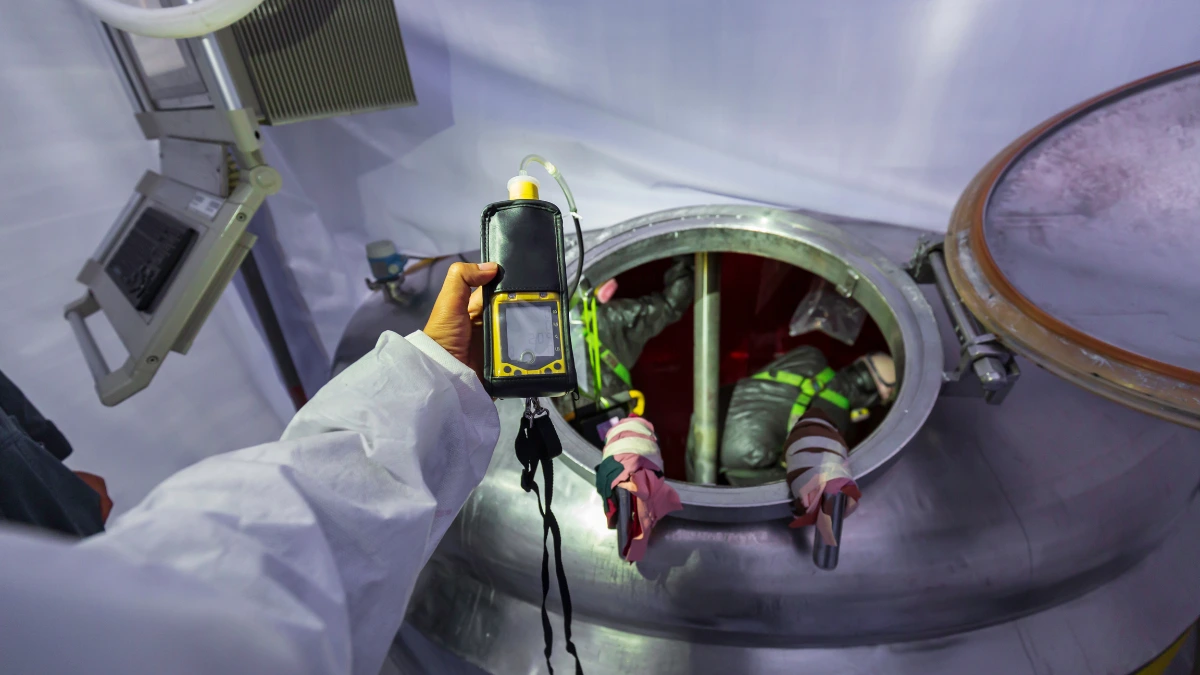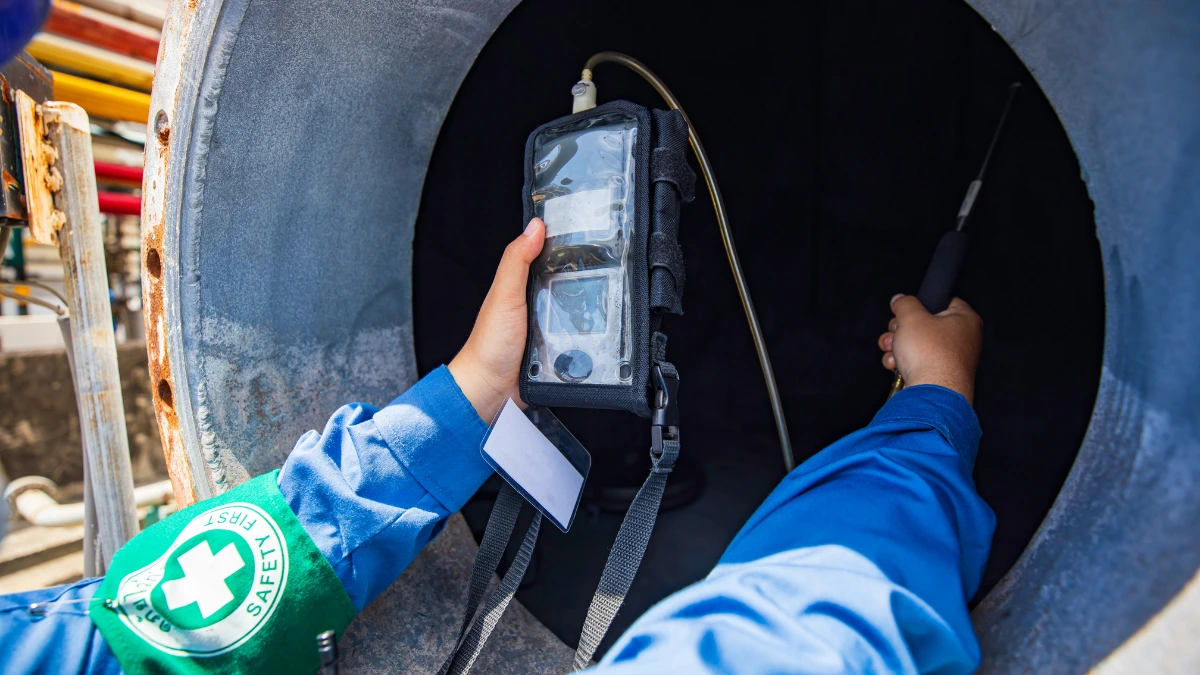A Photoionization Gas Detector (PID) is a type of gas detection device based on sensor technology that can detect the presence of hazardous gases that could potentially pose a risk to the environment due to leaks.
The advantages of a photoionization gas detector include fast response, high sensitivity, and flexibility of use. However, the disadvantages include limited UV lamp life, limited detection range, and vulnerability to toxins.
This article will give you information about a photoionization gas detector, including how it works, its advantages, its disadvantages, and an example of application.
What is a Photoionization Gas Detector?

A Photoionization Gas Detector (PID) is a measuring device commonly used in laboratories or environments with volatile organic compounds (VOC).
A PID works by breaking down gas molecules using ultraviolet (UV) light, then counting the ions formed.
PIDs have the advantage of being able to identify many types of VOCs at once, although they must still be adjusted to the type of application and environment in which they are used.
How Does a Photoionization Gas Detector Work?

Photoionization Gas Detectors (PID) work by ultraviolet (UV) light to ionize target gas molecules, producing ions and electrons, which are measured by the concentration of target gas in the sample. Here's how it works in detail:
- Ionization: Ultraviolet light from the light source in the detector strikes the gas sample. The photon energy of the UV light is greater than the ionization energy of the target gas, so that the gas will be ionized.
- Ion collection: The electric current generated is proportional to the number of ions collected on the electrode and is proportional to the gas concentration.
- Measurement: This electric current is measured and converted into a gas concentration reading, usually in parts per million (ppm) or parts per billion (ppb).
The Advantages of a Photoionization Gas Detector
The Photoionization Gas Detector (PID) has several advantages, including fast response, high sensitivity, and flexibility of use. Here are some of its main advantages in detail:
1. Fast response
 One of the advantages of PID is its fast response capability. The detector's reading of the gas concentration is done quickly, which helps with early detection and appropriate action.
One of the advantages of PID is its fast response capability. The detector's reading of the gas concentration is done quickly, which helps with early detection and appropriate action.
2. High sensitivity High sensitivity is another advantage of the PID. Various types of gases can be detected by this device with a high level of sensitivity, especially on volatile organic compounds (VOCs).
3. Flexibility of use One of the other advantages of the PID is its flexibility of use. It can be used in a variety of applications, from environmental monitoring to industrial gas leak detection.
The Disadvantages of Photoionization Gas Detectors
The Photoionization Gas Detector (PID) has several disadvantages, including limited UV lamp life, limited detection range, and vulnerability to toxins. Here are some of its main advantages in detail:
1. Limited UV lamp life One of the drawbacks of the PID is the limited life of the ultraviolet (UV) lamp. This tool uses a UV lamp to take measurements. UV lamps have a limited lifespan, so they need to be replaced periodically according to the intensity of use.
2. Limited detection range
 Limited detection range is another drawback of PIDs. Some models of this detector have a limited detection range of gas types, so some gases may not be detected properly.
Limited detection range is another drawback of PIDs. Some models of this detector have a limited detection range of gas types, so some gases may not be detected properly.
3. Vulnerable to toxins Another drawback of PIDs is their vulnerability to toxins. The performance of the detector in taking gas measurements can be hampered by the influence of some compounds, such as sulfur and silicon.
The Application of the Photoionization Gas Detector
With so many Photoionization Gas Detectors (PID) available, each with its specific use, here is an example application:
- Volatile organic compound (VOC) measurements in various industrial sectors (Oil and gas, manufacturing, construction, pharmaceutical and medical, and power generation)
- Air quality monitoring
- Occupational safety and health
- Environmental monitoring
Conclusion
Those are the definitions, how it works, advantages, disadvantages, and the example application of the Photoionization Gas Detector (PID) that you need to know.
This detector has some advantages, including fast response, high sensitivity, and flexibility of use.
The factors that become considerations are that gas detection has some disadvantages, including limited UV lamp life, a limited detection range, and vulnerability to toxins.
Essentially, this type of gas detector has high sensitivity but a limited detection range.